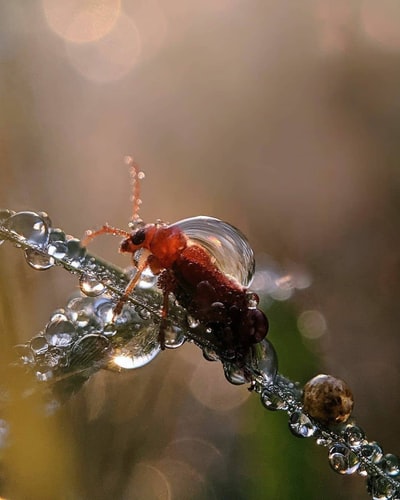The relationships in a community within an ecosystem can be shown using food chains and food webs.
- Food chains are made up of stages known as trophic levels.
- Producers create their own food via photosynthesis.
- Consumers depend on other organisms for energy and matter.
- When energy is taken in by an organism at a trophic level it can be passed onto the following trophic level when it’s consumed, expelled as detritus and stored until it decays and gets passed on to decomposers or converted into heat energy and lost into the surroundings.
- Ecological pyramids quantify food chains.
- A pyramid of numbers represents how many organisms there are at each trophic level.
- Pyramids of biomass look at the total mass of living organisms at each trophic level.
- Pyramids of energy represent how much energy moves from one trophic level to another at a specific time.
- net productivity = gross productivity – respiratory loss
- Modern methods of intensive farming set out to increase the efficiency of energy conversion.
- The soluble ions in artificial fertilisers leach out of the soil causing eutrophication.
- Natural fertilisers release the inorganic ions more slowly, prevent leaching.
- Chemical pesticides can lead to persistence and bioaccumulation.
- Intensive rearing requires high amount of antibiotics and raising ethical issues over animal welfare.
——————————————————
TEST IT!
Biologists conducted a study on organisms in a meadow. They wanted to look at energy flow and constructed the table below of their findings.
| Energy transferred (% of energy in biomass of producers) | |||||
| Ingested food (A) | Absorbed from gut (B) | Egested (C) | Net production (D) | Respired (E) | |
| Primary consumers | |||||
| Mammals | 23 | 10.5 | 10.5 | 0.15 | 10.25 |
| Insects | 3.5 | 1.4 | 2.3 | 0.34 | 0.95 |
| Secondary consumers | |||||
| Mammals | 0.13 | 0.11 | 0.02 | 0.002 | 0.13 |
| Insects | 0.12 | 0.113 | 0.024 | 0.03 | 0.093 |
a) What’s the equation to calculate how net production from the energy of ingested food?
b) How would intensive farming effect:
i. the figures in column B in the first row
ii. the figures in column E in the first row
c) The ratio of B:E is lower in insect primary consumers is lower than in mammalian primary consumers. Why?
2.
Animal waste can be disposed of by using an anaerobic digester. Microorganisms break down the big, organic molecules and produce methane which can be used for fuel. The organic substances left over can be used as natural fertiliser.
a) Suggest two reasons why it’s better to process waster using an anaerobic digester than within open ponds.
i. __________________________________________
ii. __________________________________________
b) Using too much fertiliser can cause leaching. Why does this mean to nearby lakes?
c) Give two advantages of using natural fertiliser over artificial fertiliser.
i. __________________________________________
ii. __________________________________________
3.
Food chains show the relationships in a community within an ecosystem. Food chains are made up of stages known as trophic levels.a) Not all energy is passed onto the next trophic level. Give two reasons why.
i. ___________________________________________
ii. ___________________________________________
b) Ecological pyramids are created in order to quantify food chains. What’s the difference between a pyramid of biomass and a pyramid of energy?
——————————————————
ANSWERS
a) net productivity = gross productivity – respiratory loss
b)
i. They’d be an increase because the mammals would be fed with food high in nutrients and with a high digestibility which would mean little waste.
ii. They’d be a decrease because movement would be restricted and heat loss reduced.
c) Mammals maintain a higher body temperature.
2.
a) Answers include:
i. The gases aren’t released into the atmosphere
ii. The conditions in the digester can be controlled
iii. The useful products can be collected
iv. In an open pond there are health risks and eutrophication would occur
b) There’s an increase in algae in the pond which causes light to be blocked out. The plants in the pond can’t photosynthesis and die. Bacteria break down the dead organisms and respire, using up the oxygen and encourage anaerobic bacteria to flourish.
c) Answers include:
i. It conditions the soil by improving drainage and aerating it
ii. It contains a wider array of beneficial substances
iii. It’s less energy consuming to make
iv. It’s slow releasing so leads to less leaching
3.
a) Answers include:
i. expelled as detritus
ii. be converted into heat energy
iii. respiration
b) Pyramids of biomass looks at the total mass of living organisms at each trophic level. Pyramids of energy represent how much energy moves from one trophic level to another at a specific time.
 The relationships in a community within an ecosystem can be shown using food chains and food webs.
The relationships in a community within an ecosystem can be shown using food chains and food webs.